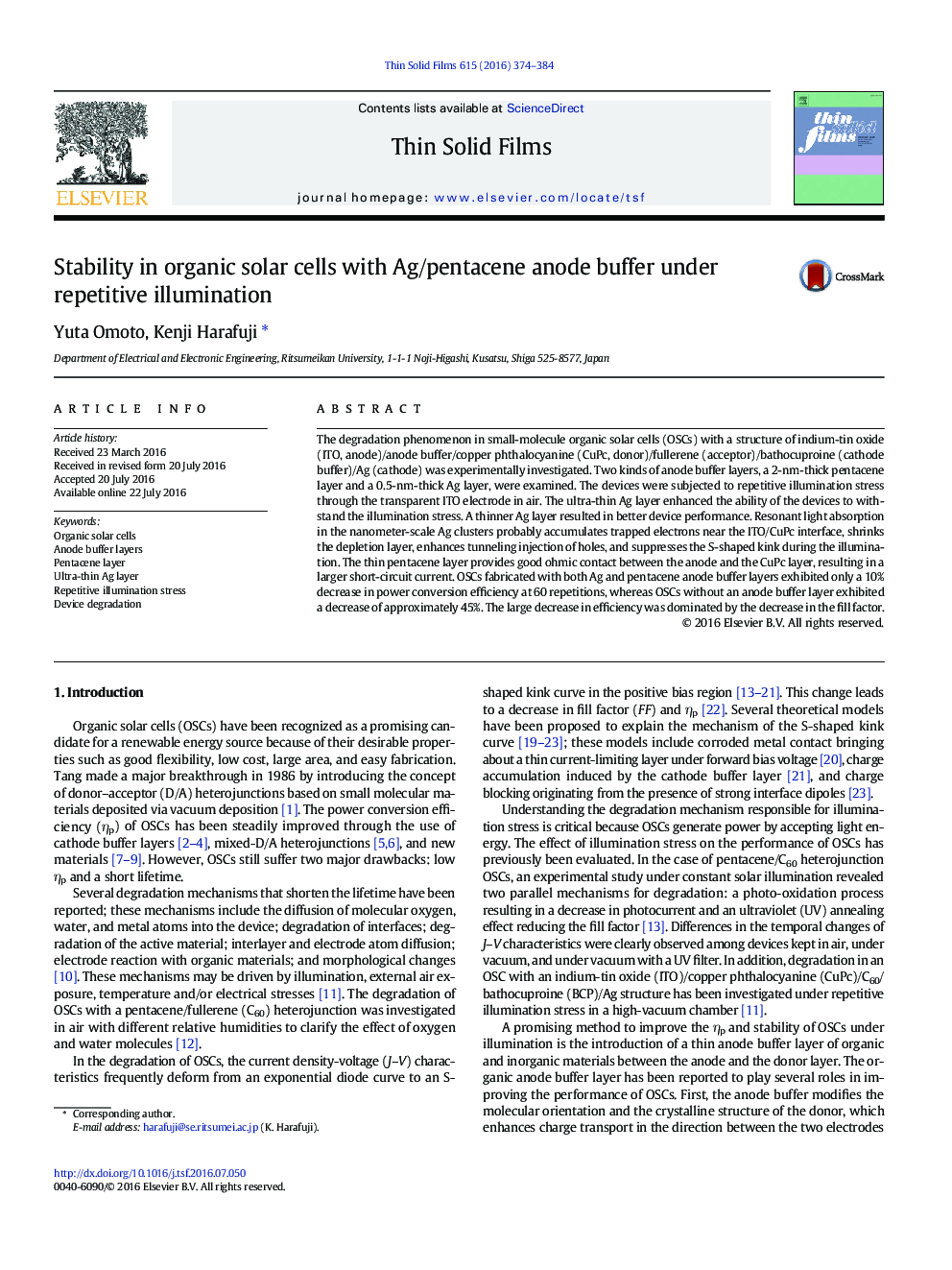| Article ID | Journal | Published Year | Pages | File Type |
|---|---|---|---|---|
| 1663867 | Thin Solid Films | 2016 | 11 Pages |
•Thin pentacene and Ag layers as an anode buffer are proposed for organic solar cell.•The thin pentacene layer provides a large short-circuit current and high efficiency.•The ultra-thin Ag layer provides durability against an illumination stress.•Plasmon effect by Ag clusters enhances hole injection, and suppresses degradation.•The combinational use of the two layers results in better device performance.
The degradation phenomenon in small-molecule organic solar cells (OSCs) with a structure of indium-tin oxide (ITO, anode)/anode buffer/copper phthalocyanine (CuPc, donor)/fullerene (acceptor)/bathocuproine (cathode buffer)/Ag (cathode) was experimentally investigated. Two kinds of anode buffer layers, a 2-nm-thick pentacene layer and a 0.5-nm-thick Ag layer, were examined. The devices were subjected to repetitive illumination stress through the transparent ITO electrode in air. The ultra-thin Ag layer enhanced the ability of the devices to withstand the illumination stress. A thinner Ag layer resulted in better device performance. Resonant light absorption in the nanometer-scale Ag clusters probably accumulates trapped electrons near the ITO/CuPc interface, shrinks the depletion layer, enhances tunneling injection of holes, and suppresses the S-shaped kink during the illumination. The thin pentacene layer provides good ohmic contact between the anode and the CuPc layer, resulting in a larger short-circuit current. OSCs fabricated with both Ag and pentacene anode buffer layers exhibited only a 10% decrease in power conversion efficiency at 60 repetitions, whereas OSCs without an anode buffer layer exhibited a decrease of approximately 45%. The large decrease in efficiency was dominated by the decrease in the fill factor.
